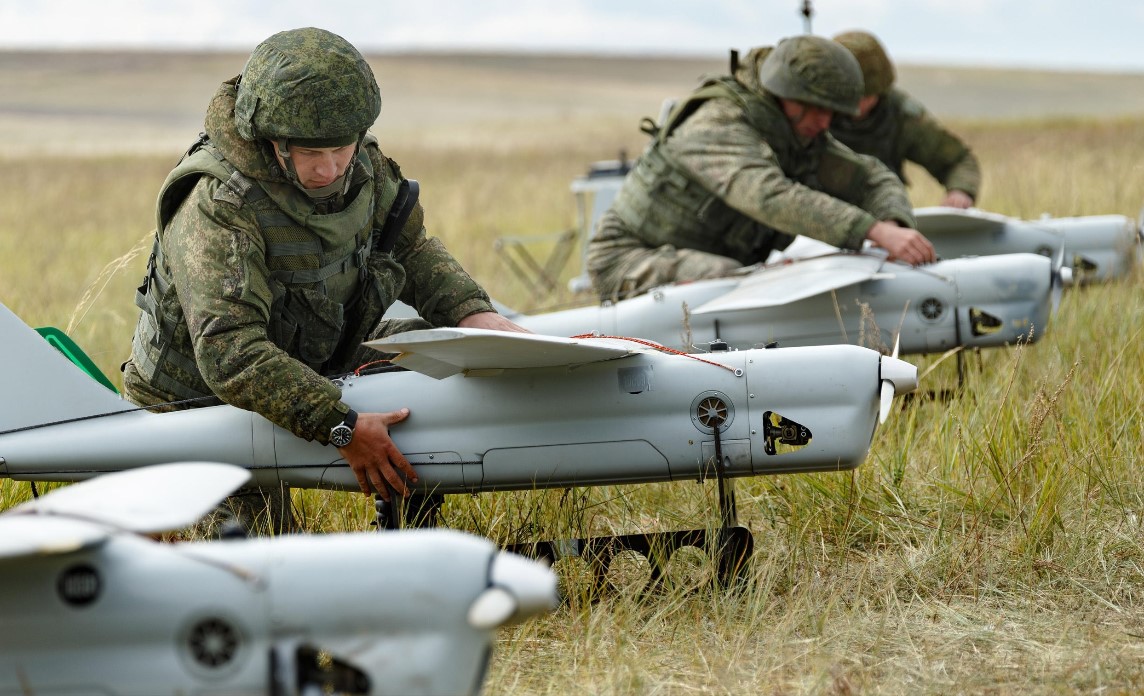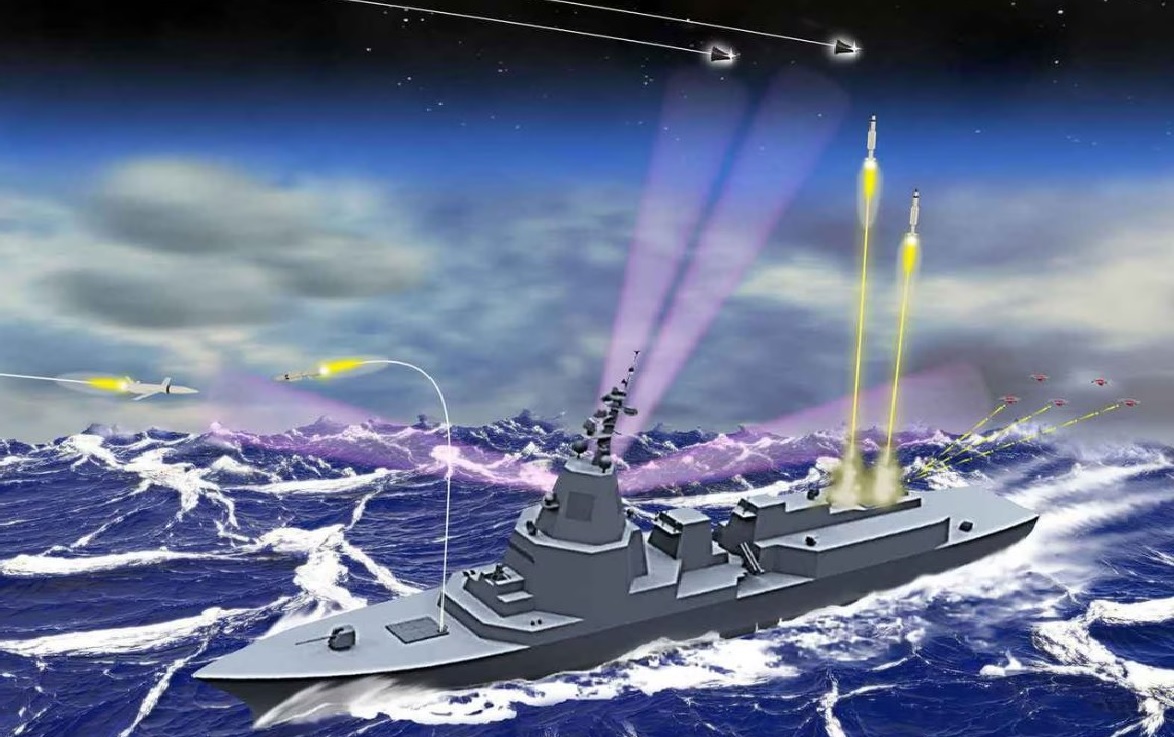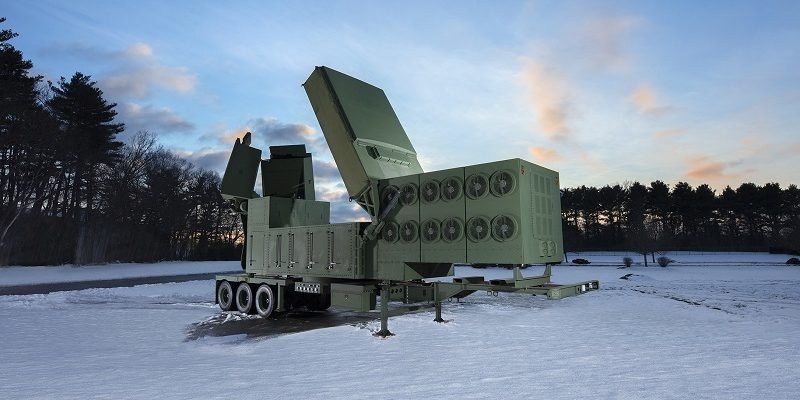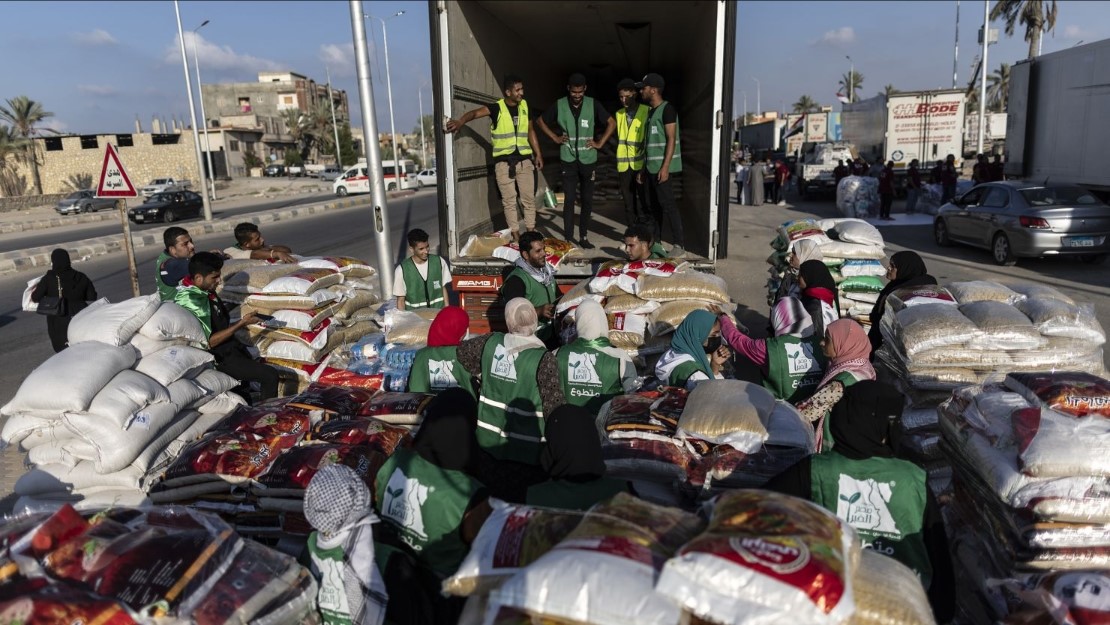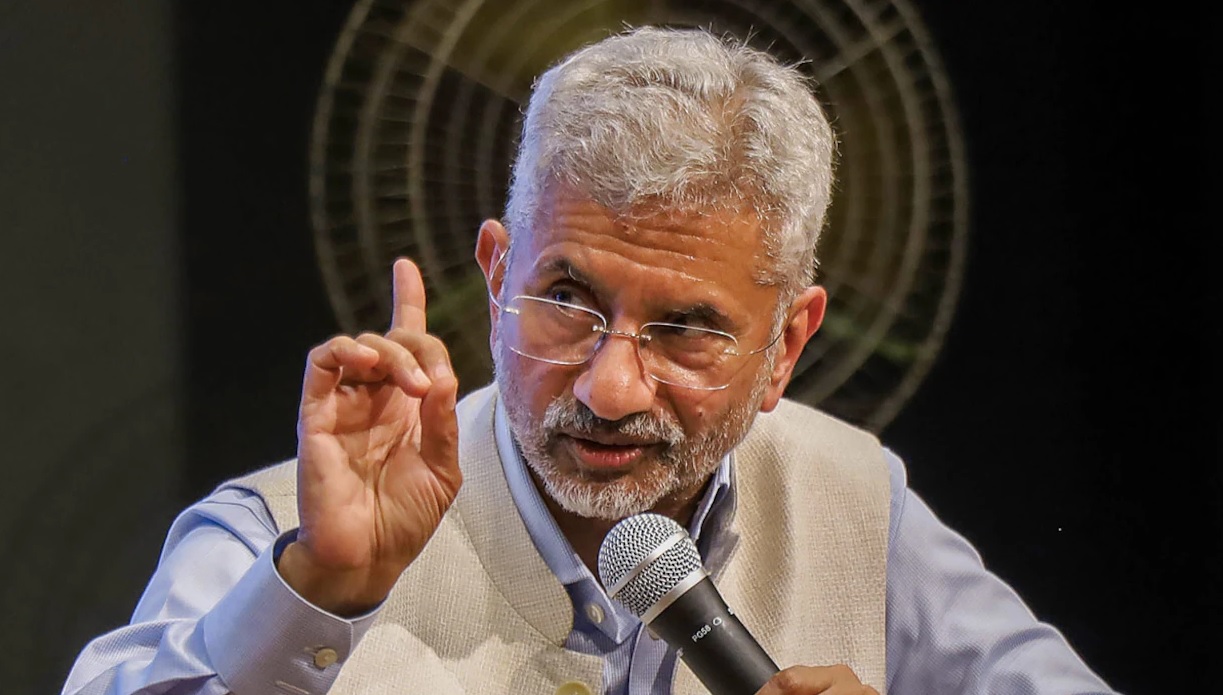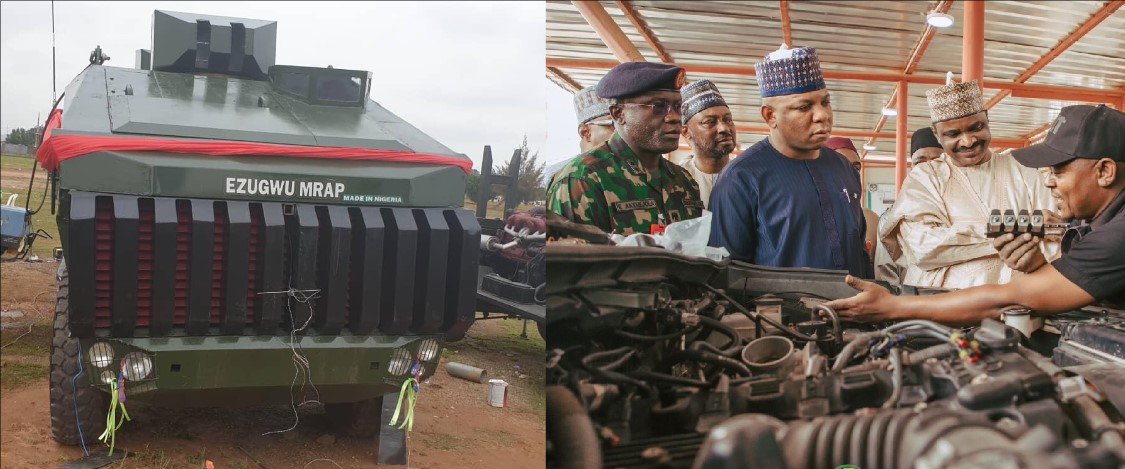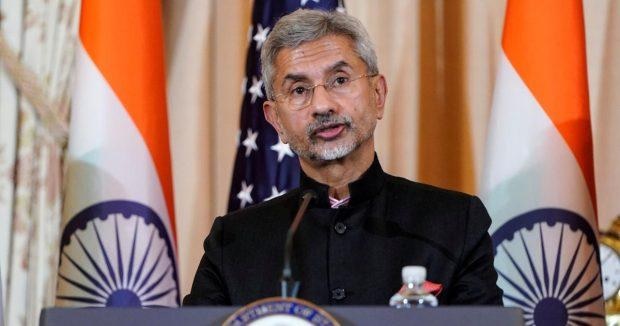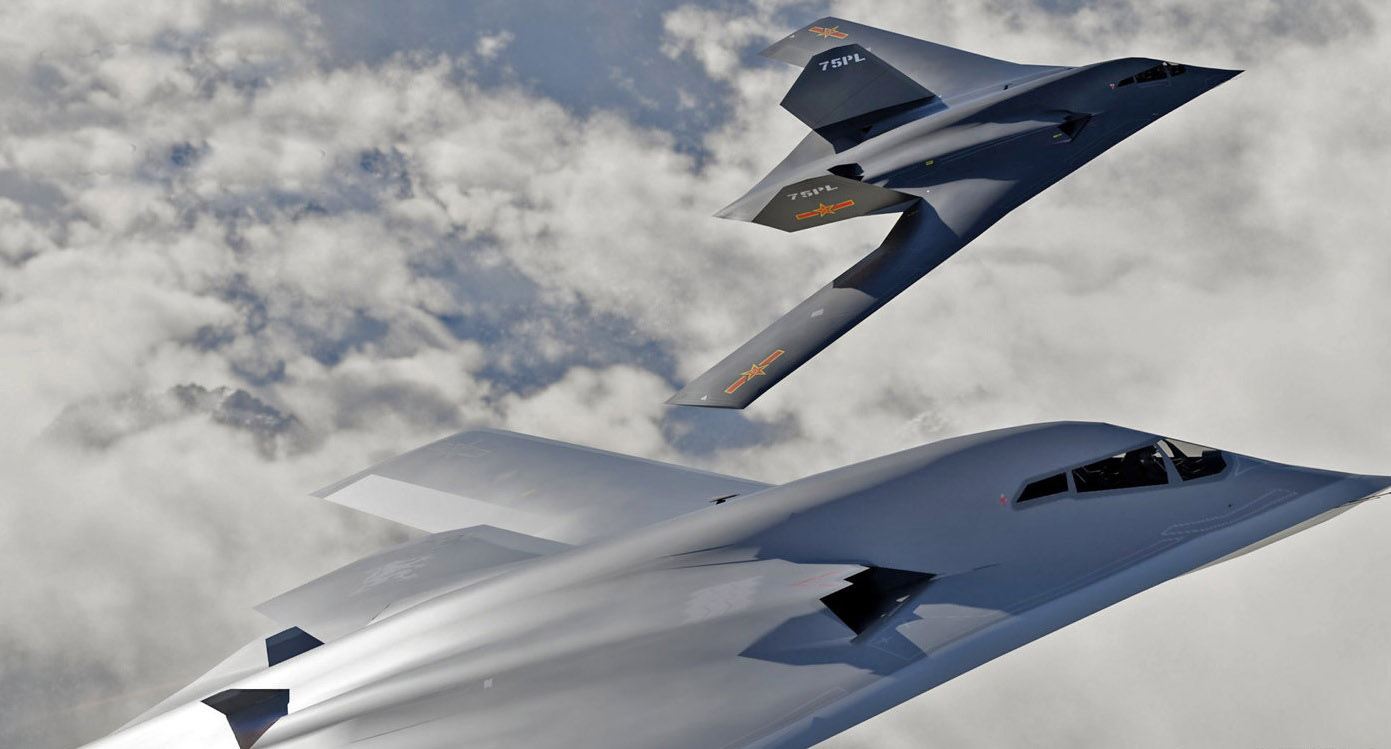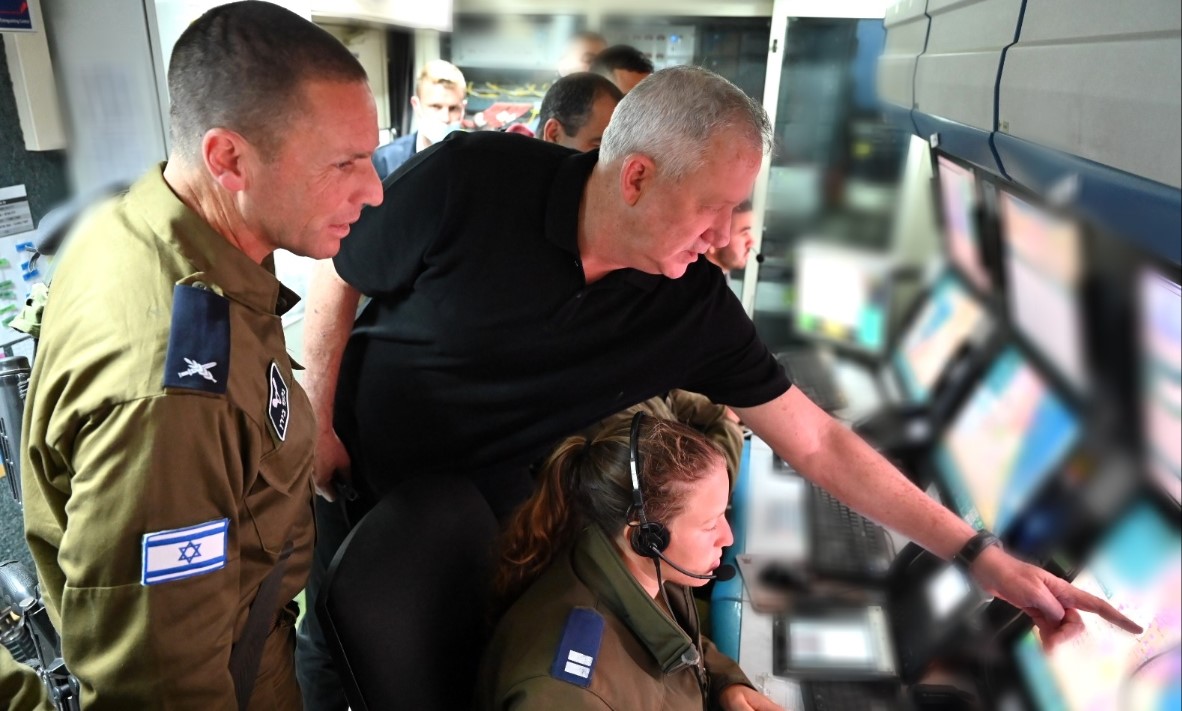World
Defense NewsU.SThe 1st Marine Aircraft Wing has announced that flight operations for its MV-22 Ospreys have resumed as of March 14, following a thorough safety assessment by the Naval Air Systems Command (NAVAIR).In a statement released by the Marines, they explained that the decision to resume flights came after a careful evaluation process aimed at ensuring the aircraft's safety and readiness.U.S. Marine Corps Lt. Gen. Bradford J. Gering, Deputy Commandant for Marine Corps Aviation, emphasized the Marine Corps' commitment to the safety and preparedness of its pilots and aircrew. He acknowledged the tragic incident involving an Air Force CV-22 and reiterated the Marine Corps' dedication to learning from such events. Gering highlighted the deliberate approach taken to reinstate the Ospreys to flight status, expressing confidence in the aircraft's safety and the professionalism of Marine Corps personnel.Since the grounding of the MV-22s on December 6, 2023, the Marine Corps has focused on maintaining the proficiency and readiness of its aircrews. Despite the suspension of flight operations, aircrew training continued through simulator sessions and academic pursuits. These activities provided opportunities for skill refinement and leadership development.The Marine Corps expressed trust in NAVAIR's analysis and engineering assessment, which formed the basis for the decision to resume flight operations. Commandant of the Marine Corps Gen. Eric M. Smith emphasized the importance of balancing crisis response with modernization efforts, highlighting the need for funding to support training, maintenance, safety, and readiness initiatives.
Read More → Posted on 2024-04-05 15:30:29World
Defense NewsUkraine Russia WarUkrainian officials claimed Friday they used a barrage of drones to destroy at least six military aircraft and badly damage eight others at an airfield in Russia's Rostov region, while Russian defense officials claimed they intercepted 44 Ukrainian drones and that only a power substation was damaged in the attack.The assault appeared to be one of Kyiv's biggest air attacks in the war, coming as its forces step up their assaults on Russian soil. The Associated Press could not independently verify either side's claims.Russia has escalated attacks on civilian infrastructure, including Ukraine's power plants, in recent weeks, signaling a new and potentially dangerous phase in the conflict as both sides struggle to achieve significant advances on the ground.The overnight attack targeted a military airfield near Morozovsk in Russia and was conducted by Ukraine's Security Service in cooperation with the army, Ukrainian intelligence officials told the AP.They said around 20 members of the airfield's personnel were killed or injured. Morozovsk airfield was used by Russian bombers that have been launching guided aerial bombs at Ukraine's cities and frontline positions, the officials said.They spoke on anonymity because they were not authorized to publicly discuss the operation.If true, the attack would be among Ukraine's most successful cross-border strikes. Last October, Ukraine claimed it destroyed nine Russian helicopters at two airfields in Russian-occupied regions using longe-range ballistic missiles donated by the United States.Last August, Ukrainian media, citing unidentified intelligence sources, claimed that drone attacks hit parked Russian bomber aircraft at air bases deep inside Russia.Russia's Defense Ministry said a total of 44 drones were "intercepted and destroyed" in the Morozovsky district, more than 100 kilometers (60 miles) from the border. The attack damaged a power substation, Rostov Gov. Vasily Golubev said.The Russian defense ministry said nine more drones were intercepted over the border regions of Kursk, Belgorod, Krasnodar and the nearby Saratov region.Drone warfare is a key feature of the war, which has extended into a third year since Russia's full-scale invasion of its neighbor. On the 1,000-kilometer (600-mile) front line, where fighting is largely bogged down, low-cost drones are used by both sides to knock out expensive military hardware.The Kremlin's forces have used large numbers of Iranian-designed Shahed drones to bombard urban areas of Ukraine. Kyiv, in turn, has developed small but fast-growing defense industry where drones, including deadly unmanned sea vessels, are proving effective.Russian authorities have long accused Ukraine of launching regular drone attacks on power plants, oil refineries and other targets in western regions of Russia near the border. Last month, Ukraine fired a barrage of 35 drones at such targets, Russia said.Some attacks have reached deep into Russia, including Moscow and as far as 1,200 kilometers (745 miles) east of Ukraine.Ukraine cannot match the scale of Russia's military, however. Last week, Moscow launched a a mass barrage of 99 drones and missiles against Ukraine's energy infrastructure, hitting regions across the country.Meanwhile, Ukraine's air force said it intercepted 13 Russian drones launched overnight at the southern regions of Odesa, Zaporizhzhia and Dnipropetrovsk, but five missiles got through. Authorities did not report any casualties.Ukrainian President Volodymyr Zelenskyy said he held a meeting with his top brass focused on the production of attack drones and the manufacture of electronic warfare equipment to intercept incoming drones.He said late Thursday that the meeting put together "clear written agreements with manufacturers, clear financing and clear delivery deadlines."Authorities will next turn to "robust and increasing" missile production, he said, as military support from Western partners falls short of what Kyiv hoped for.Zelenskyy said an assessment of frontline positions found that Ukraine has "managed to stabilize our positions" despite being outgunned and outnumbered by the Russian army.
Read More → Posted on 2024-04-05 15:20:11India
Defense NewsIndiaAttandeep Singh, a former militant associated with the Bhindrawala Tiger Force Militant Group, was shot dead by two assailants on a motorcycle in Balachaur on Wednesday night. Accompanied by his nephew, Attandeep was in his car when the attack took place. The police arrived at the scene and recovered a poster claiming responsibility for the murder, signed by one Gopi Nawanshahria.Attandeep had previously been arrested by the Punjab Police in 2014 due to his ties with the militant group. After serving his term, he was released in 2019, and since then had been living with his family in Karnal, as he had no pending cases against him.The police are investigating the incident further to determine the motives behind the attack and to apprehend the perpetrators.
Read More → Posted on 2024-04-05 15:15:05Space & Technology
Technology NewsWorldOzonetel has unveiled a new suite of AI-powered solutions aimed at enhancing digital-first customer experiences. Developed with GenAI capabilities and purpose-built LLMs (Large Language Models), this suite is designed exclusively to meet the needs of modern businesses navigating the digital landscape.The digital CX solution suite is seamlessly integrated with Ozonetel’s acclaimed unified CX platform, offering organizations the ability to streamline and orchestrate customer journeys across various digital touchpoints. With capabilities spanning WhatsApp, social media, SMS, and other advanced messaging channels, alongside voice solutions, enterprises can now manage millions of digital interactions from a single platform.In today’s digital age, many enterprises grapple with effectively leveraging new technologies to drive growth. One major hurdle is the lack of a unified interface for managing and analyzing customer interactions across digital channels in real-time and at scale. This fragmentation often leads to subpar customer experiences and missed business opportunities. Additionally, managing multiple vendors results in data silos and operational complexities across different business functions.Discussing the potential of the AI-led digital CX solution suite, Prashanth Kancherla, Chief Product Officer of Ozonetel, emphasized the crucial link between exceptional CX and business growth. He highlighted how the suite has already delivered tangible results for enterprise customers, such as doubling ROI in real estate sales and increasing brand engagement fivefold in hospitality.Key features of the AI-led digital CX suite include:Digital Customer Journeys: Orchestrating seamless customer interactions across digital touchpoints.Digital Conversational Marketing: Enabling personalized engagement at scale across digital channels.Digital Self-Service: Empowering customer interactions with GenAI-powered chatbots and human handoff.Digital CX From Field: Allowing field team members to engage with customers digitally without compromising security.Omnichannel+ Digital CX: Providing a unified experience across multiple channels for faster service resolution.Digital Conversational Intelligence: Offering real-time insights from digital interactions to enhance customer experience.Overall, Ozonetel’s AI-led digital CX solution suite presents businesses with an opportunity to reimagine customer experiences in today’s digital-first era, driving growth through enhanced engagement and streamlined operations.
Read More → Posted on 2024-04-05 15:12:12World
Defense NewsIndiaCommunications with Russia must remain open despite its attack on Ukraine, Italy's defence minister said on Friday, commenting on recent talks between his French and Russian counterparts.On Wednesday, French Armed Forces Minister Sebastien Lecornu had a phone conversation with Russia's Sergei Shoigu - the first since October 2022 - during the course of which France condemned Russia's "war of aggression" in Ukraine.France later denied Russian claims that it expressed willingness to hold dialogue on Ukraine or discuss possible peace negotiations when the two countries' defence ministers spoke on Wednesday."Although the Russian Federation has invaded a sovereign country, and for this reason Italy and France always support and will support Ukraine, it is important (...) that channels of confrontation and dialogue are also kept open," Italy's Guido Crosetto said in a statement.Crosetto, who spoke to Lecornu on Thursday, added that "tough and critical" communication, is essential to achieve the goal of stopping the Russian attacks and to be able to "create the conditions for a just peace".
Read More → Posted on 2024-04-05 15:08:00Science
Science News WorldResearchers have recently uncovered a significant breakthrough in understanding solar storms, particularly the historic Carrington Event of 1859. Through the analysis of radiocarbon concentrations in tree rings from Lapland, scientists have gained valuable insights into the effects of one of the largest recorded solar storms and its implications for future geomagnetic disturbances.The Carrington Event, renowned for its striking aurora and disruption to telegraph systems globally, has long fascinated scientists. However, the ability to study medium-sized storms like this using radiocarbon dating has been limited until now.A collaborative effort involving the University of Helsinki, Natural Resources Institute Finland, and the University of Oulu has led to the detection of an increase in radiocarbon concentrations in tree rings following the Carrington storm. This marks the first time such an observation has been made, providing a new avenue for investigating solar storm frequencies and their impacts on Earth.Solar storms arise from interactions between solar plasma flows and Earth's geomagnetic field, resulting in phenomena such as aurorae. High-energy particles from these storms can generate radiocarbon (14C) in the upper atmosphere, which is then absorbed by plants through photosynthesis, leaving a trace in annual tree rings.By analyzing these rings, researchers can trace back and study past solar events.Markku Oinonen, Director of the University of Helsinki’s Laboratory of Chronology, underscores the significance of radiocarbon as a cosmic marker capturing phenomena related to Earth, the solar system, and outer space.This discovery holds crucial implications for understanding solar behavior and its potential disruptions to modern technology, including electrical and mobile networks, satellites, and navigation systems.The study utilized a dynamic atmospheric carbon transport model developed by researchers at the University of Oulu to interpret the results, revealing geographical variations in radiocarbon distribution.The findings indicate that the excess radiocarbon from the Carrington Event was primarily transported to the lower atmosphere through northern regions, challenging previous assumptions about its movement.
Read More → Posted on 2024-04-05 05:51:47World
Defense News U.KIn a recent training exercise held at Salisbury Plain in Southern England, the British Army honed the skills of its airborne medical personnel. The exercise featured soldiers from the agency’s 23 Medical Squadron, 16 Medical Regiment, known for their support in advanced medical procedures ranging from resuscitation to damage control surgery.The scenario simulated a rapid deployment to aid an ally facing potential invasion from a neighboring region. Utilizing a Royal Air Force A400M Atlas transport aircraft, the team swiftly reached the designated location. Upon arrival, the medics and their equipment were airlifted by helicopter to establish temporary treatment facilities across the training site.The training encompassed a range of medical scenarios, including addressing general healthcare needs, treating point-of-wound injuries, and managing complex conditions such as blast injuries requiring life-saving surgery.Evaluation of the team focused on their communication skills, supply management, and ability to remain mobile and concealed from potential threats.According to Maj. Sean Mason, Commanding Officer of 23 Medical Squadron, the exercise validated the squadron’s readiness for high-intensity missions as part of the 16 Air Assault Brigade, the British Army’s designated global response force unit. Maj. Mason emphasized the importance of mental and physical robustness in meeting the challenges of high readiness operations.Combat Medical Technician Cpl. Anthony Siddall, tasked with managing the medical reception station, highlighted the intensity of the training, noting its reflection of real-world scenarios where rapid response is crucial.The 16 Medical Regiment, to which the squadron belongs, boasts a diverse team comprising combat medical technicians, dentists, biomedical scientists, and orthopedic surgeons. With experience in various deployment scenarios, including recent missions in Kabul and earthquake relief efforts in Turkey and Sudan, the regiment remains prepared for both military and humanitarian operations.The training exercise underscores the British Army’s commitment to maintaining a world-leading military medical capability, ensuring readiness to deploy anywhere in the world, whether in conflict zones or humanitarian crises.
Read More → Posted on 2024-04-05 05:44:37World
Defense News JapanLockheed Martin has achieved a significant milestone by successfully demonstrating the first live track AN/SPY-7(V)1 radar for the Aegis System Equipped Vessel (ASEV). This achievement marks a critical step in the program, which is poised to become a cornerstone of Japan's national defense strategy.During the initial track event, the SPY-7 radar tactical hardware and software tracked objects in space, confirming the maturity of the radar system and initiating comprehensive performance testing.Amr Hussein, vice president of Multi-Domain Combat Solutions at Lockheed Martin, emphasized the rigorous integration and testing process employed to ensure the capability of Aegis and SPY-7 before delivery to Japan. This meticulous testing approach aims to minimize risk and guarantee the timely delivery of a fully integrated and calibrated system.The Japan Ministry of Defense is set to deploy two ASEVs equipped with the SPY-7 radar system. Chandra Marshall, vice president of Radar and Sensor Systems at Lockheed Martin, highlighted the advanced technology utilized in the SPY-7 radar product line, derived from the Long Range Discrimination Radar (LRDR) program. Marshall underscored the radar's ability to provide continuous 24/7 coverage, serving as a superior deterrence asset applicable to both land and maritime defense applications worldwide.
Read More → Posted on 2024-04-05 05:30:49India
Defense News IndiaArmy recovered a large quantity of illegal Arms, Ammunition, and other war-Like Stores from Khujoi Rok Nala near Sadu Kabui Village of Bishnupur district in Manipur on Thursday.The recovered stores include one 9mm Carbine Machine Gun, one Sten Gun Mk-2, one .303 Rifle, one 9mm pistol, one Anti-riot gun, 14 Grenades, Ammunition and other War-Like stores.A defence spokesperson said that the army launched a joint search operation, based on specific input about movement of suspicious individuals and presence of illegal arms and ammunition, along with SSB, Manipur Police including Commandos.The recovered items were handed over to police after the operation.Manipur has witnessed repeated arms loot. Recently Manipur chief minister N Biren Singh reported a successful recovery, with 1,757 arms and 22,707 ammunition reclaimed from the approximately 5,600 arms and 6.5 lakh rounds looted from the Manipur Police armoury during the initial days of the violence.Manipur Governor Anusuiya Uikey recently said that 219 persons lost their lives and displaced more than 60,000 people due to the violence. A total of about 10,000 FIRs have been registered so far and the state government handed over 29 cases to CBI and one case to NIA for independent and transparent investigation.Manipur witnessed unprecedented violent clashes, attacks, counter attacks and arsoning of houses, vehicles and government and private properties in more than 10 districts during and after May 3 'Tribal Solidarity March' called by the All-Tribal Students' Union of Manipur (ATSUM) to oppose the demand for inclusion of the Meitei community in the Scheduled Tribe category.The recovered items were handed over to police after the operation.
Read More → Posted on 2024-04-05 05:26:05World
Defense News U.SNorthrop Grumman's Integrated Battle Command System (IBCS) recently completed a successful test at White Sands Missile Range in New Mexico. During the test, IBCS effectively integrated data from the Lower Tier Air and Missile Defense Sensor (LTAMDS) to track and intercept a long-range cruise missile surrogate using a PAC-3 Missile Segment Enhancement.Rebecca Torzone, Northrop Grumman's vice president and general manager for global battle management and readiness, emphasized the importance of this integration, stating that it is a crucial step in modernizing integrated air and missile defense. Torzone highlighted that IBCS is ready for deployment and plays a key role in the global battlespace by efficiently countering complex threats.IBCS is designed to unify various assets in the battlespace, regardless of their source, service, or domain. It has demonstrated its compatibility with a wide range of sensors and shooters, including Patriot, Sentinel, F-35, CAMM, Giraffe, PAC 2 (GEM-T), PAC 3, and other sovereign capabilities. Its modular, open, and scalable architecture allows for the fusion of sensor data, providing a comprehensive view of the battlespace and enabling rapid decision-making to optimize shooters' capabilities.In 2023, IBCS was approved for full-rate production, allowing the Army to plan for fielding operational air defense units later in the year. Additionally, it achieved initial operational capability, making it available for deployment in wartime operations. Internationally, Poland has declared Basic Operational Capability for IBCS as part of their WISŁA medium-range air defense program. Furthermore, IBCS is slated for deployment in the Defense of Guam as part of the U.S. Army's program of record for integrated air and missile defense modernization.
Read More → Posted on 2024-04-05 05:22:54India
Defense News IndiaThe army is planning to significantly expand its outreach to the industry by expanding its internal design bureau that promotes innovation in military technologies and is looking to create special structures, including brigade-level formations that can be used to test bed new tech and creation of an adversarial force for wargaming future challenges.The Army Design Bureau (ADB), which is tasked with induction and absorption of futuristic technologies, will be expanded and cells will be established at formations and units for greater interaction with the industry."Organisational and procedural transformation will be undertaken to ensure induction and absorption of niche technology towards futuristic capability development with a focus on Atmanirbharta," an army official said. These initiatives were planned at the Army Commanders Conference that was held in a hybrid format this week.The army is looking to create a new fund head to promote these initiatives. It plans to set up test bed brigades that will be specially tasked with trying out new equipment being developed by the industry.Officials added to ensure a more realistic training environment and creation of wargaming for future threats, a new body that will function as an 'adversarial force' is also being considered by the army.
Read More → Posted on 2024-04-05 05:16:51World
Defense News Israel & GazaIsrael has announced it will permit the temporary delivery of humanitarian aid to the northern Gaza Strip following pressure from US President Joe Biden. The aid will be allowed through Ashdod port and the Erez checkpoint. The move comes after a strike by Israel killed seven employees of US-based charity World Central Kitchen, prompting condemnation from the US president.In a phone call with Israeli Prime Minister Benjamin Netanyahu, Biden criticized the strike as "unacceptable" and called for an immediate ceasefire. He emphasized the need for Israel to take concrete steps to address civilian harm and ensure the safety of aid workers.Following Israel's announcement, the White House welcomed the decision to increase aid flow to Gaza and urged rapid implementation. Gaza has been under Israeli blockade since the start of the conflict, with the UN warning of dire humanitarian consequences.The conflict, which began with a Hamas attack on October 7, has resulted in significant casualties on both sides. Israel claims the lives of 1,170 Israelis and foreigners, mostly civilians, while Gaza's health ministry reports over 33,000 deaths, primarily women and children.Additionally, Israel will allow increased Jordanian aid through the Kerem Shalom border crossing in southern Israel. The move aims to alleviate the humanitarian crisis in Gaza amid escalating tensions in the region.
Read More → Posted on 2024-04-05 05:12:52India
Defense News IndiaExternal Affairs Minister S Jaishankar has responded to remarks made by a senior United Nations official regarding elections in India, stating that he doesn't require validation from the global body on the matter. In response to a query about a statement made by a spokesperson for the UN Secretary-General, Jaishankar emphasized that the Indian elections should be free and fair, a sentiment echoed by the people of India themselves.The UN official's statement, made last week, came in response to a question during a press briefing regarding political unrest in India leading up to the national elections. The spokesperson expressed hope that everyone's rights, including political and civil liberties, would be protected, and that voting would occur in a free and fair atmosphere.Jaishankar, who was in attendance to support his ministerial colleague and BJP candidate Rajeev Chandrasekhar in the Lok Sabha polls, dismissed the need for UN intervention, stating, "I don’t need the United Nations to tell me our elections should be free and fair. I have the people of India."The UN official's comments were prompted by concerns over recent events in India, such as the arrest of Delhi Chief Minister Arvind Kejriwal and the freezing of opposition Congress’ bank accounts, leading to questions about political stability in the country ahead of the elections.Despite these concerns, Jaishankar reiterated his confidence in the Indian democratic process, asserting that the people of India will ensure that elections are conducted in a manner that is free and fair.
Read More → Posted on 2024-04-05 05:06:45India
Defense News IndiaAmerican aerospace giant GE Aerospace has announced a substantial investment of USD 30 million (₹240 Crores) to expand and modernize its manufacturing facility in Pune. The move aims to bolster the plant's capabilities and accommodate new projects and manufacturing processes. This investment will primarily involve acquiring new machinery, equipment, and specialized tools, alongside enhancing the existing production capacity.The Pune unit, which commenced operations in February 2015 and was inaugurated by Prime Minister Narendra Modi, specializes in producing components for commercial jet engines. These components play a crucial role in the assembly of various GE engines, including G90, GEnx, GE 9X, and LEAP engines by CFM, a joint venture between GE and Safran.Mike Kauffman, Vice President of Global Supply Chain at GE Aerospace, expressed confidence in the Pune plant's ability to contribute significantly to the company's global supply chain. Amol Nagar, Managing Director of GE Aerospace's Pune facility, emphasized that the investment aligns with the company's strategy to meet the growing demand from customers in the aerospace sector.GE Aerospace has been operating in India for over four decades and has established a strong presence. Currently, around 700 GE and partner engines are in service in the country. Notably, GE Aerospace's defense engines and systems power key assets of the Indian Air Force and Navy, including the Tejas Mk 1 light combat aircraft, helicopters, aircraft carrier battleships, and frigates.The Pune facility, along with its 13 local partners, plays a vital role in GE's global supply chain network. Additionally, GE operates the John F Welch Technology Center in Bengaluru, which has been operational for more than 24 years, further emphasizing its commitment to India's aerospace sector.This investment underscores GE Aerospace's dedication to enhancing its manufacturing capabilities in India to better serve its customers and support the country's aerospace industry's growth.
Read More → Posted on 2024-04-05 04:37:12World
Defense News NigeriaThe Nigerian Army has taken a significant step towards reducing its carbon footprint by signing an agreement with the Presidential Compressed Natural Gas Initiative (PCNGI). The agreement entails converting 30 petrol-powered vehicles to CNG-powered capabilities. This move is in line with the Standard Organisation of Nigeria's push for CNG use in road vehicles.To facilitate the vehicle conversions, the Nigerian Army will collaborate with the National Institute of Transport Technology. Additionally, 22 of the army’s engineers will undergo a two-week conversion technology training provided by the institute.According to Major General Onyema Nwachukwu, the Nigerian Army's Public Relations Director, this shift to green energy reflects the force’s commitment to environmental sustainability. Moreover, it is expected to be cost-effective in the long run.This initiative follows a previous agreement in 2022 between the Nigerian Army and energy giant SIDIL Group. Under this agreement, renewable energy generators will be built in 107 army barracks and encampments. The project aims to generate 3.7 gigawatts of decentralized energy.Currently, renewable energy contributes 16.4 percent of Nigeria's total electrical capacity. Complete transition to renewable energy by 2050 is estimated to cost approximately $4 billion.
Read More → Posted on 2024-04-05 04:31:15India
Defense News IndiaIn recent news, allegations have surfaced claiming that the Indian government was involved in the killings of nearly 20 individuals in Pakistan, deemed as threats to national security. According to a report by The Guardian, citing Indian and Pakistani intelligence operatives, these killings were purportedly part of India's strategy to eliminate terrorists residing on foreign soil. However, the Indian Ministry of External Affairs has vehemently denied these allegations, labeling them as "false and malicious anti-India propaganda."The Guardian's report suggests that India's Research & Analysis Wing (RAW) was behind these alleged killings, with targets including Khalistani separatists operating from abroad. It is claimed that RAW paid sleeper cells operating in the United Arab Emirates to carry out these operations. Notably, these actions were reportedly intensified following the Pulwama attack prior to the 2019 Lok Sabha Elections.The Indian government has consistently refuted any involvement in targeted killings abroad, with officials emphasizing that such actions are not part of Indian policy. Despite the allegations, the Pakistani government has been hesitant to disclose all data publicly, as the targeted individuals are known terrorists or linked to outlawed militant groups that Pakistan denies sheltering.Among the individuals reportedly targeted by India are convicted Kashmiri terrorist Zahid Akhund, Jaish-e-Mohammed commander Shahid Latif, Hizbul Mujahideen commander Bashir Ahmad Peer, Saleem Rehmani (on India's most-wanted list), Khalistani leader Paramjit Singh Panjwar, and Lashkar-e-Taiba commander Riyaz Amhed.The report further alleges that Canada and the USA openly accused the Indian government of involvement in the killings of Khalistani separatists on their soil, leading to a cessation of such activities. Canadian Prime Minister Justin Trudeau informed their Parliament of India's alleged role in the assassination of Khalistani separatist Hardeep Singh Nijjar, while Washington claimed India's involvement in a foiled assassination attempt of another Khalistani separatist, Gurpatwant Singh Pannun.India's purported inspiration for these operations is said to have come from intelligence agencies such as Israel's Mossad and Russia's KGB, both of which have faced accusations of carrying out similar operations abroad.In conclusion, while allegations persist regarding India's involvement in the killings of individuals in Pakistan, the Indian government vehemently denies these claims, asserting that such actions are not part of its policy. The Pakistani government, meanwhile, has been reticent in providing full disclosure of data pertaining to the targeted individuals. These allegations underscore the complexities of regional tensions and the challenges of international relations in South Asia.
Read More → Posted on 2024-04-05 04:25:06India
Defense News China ,U.S ,IndiaIn recent discussions surrounding military capabilities, China's unveiling of its much-anticipated H-20 bomber has sparked global attention. The H-20, touted as China's first strategic stealth bomber, is set to bring significant advancements to the People's Liberation Army (PLA) Air Force, according to statements made by Chinese officials.Deputy Commander of the PLA Air Force, Wang Wei, addressed the topic during the second session of the Chinese People's Political Consultative Conference (CPPCC), affirming that the H-20 has encountered no major technical obstacles during its development. This statement echoes earlier reports from Chinese state-owned media outlet Global Times, suggesting that the aircraft's public debut is imminent.Despite previous speculation regarding potential delays, Wang's reassurances indicate that the H-20's progress remains on track. He emphasized the aircraft's transformative potential, highlighting its role in bolstering China's air defense capabilities.The H-20's significance lies in its ability to fill a strategic gap within China's current bomber fleet, which primarily consists of the aging H-6 model. Unlike its predecessor, the H-20 is expected to possess stealth capabilities, allowing it to operate more effectively in modern combat scenarios.However, analysts have raised concerns about the H-6's limitations, particularly its vulnerability to advanced air defense systems. Without stealth capabilities, the H-6 may struggle to penetrate heavily fortified enemy airspace, necessitating the use of standoff munitions.In contrast, the development of the H-20 represents a significant leap forward for the PLA Air Force. With its anticipated stealth features, the H-20 has the potential to evade detection and deliver precision strikes with greater efficiency.Furthermore, experts suggest that the H-20 could play a pivotal role in shaping regional dynamics, particularly in the Indo-Pacific region. As tensions between China and the United States persist, the deployment of advanced military assets such as the H-20 could further escalate the arms race in the region.The Pentagon's "China Military Power Report" has underscored the potential threat posed by the H-20, citing its long-range capabilities and stealth technology as key factors. With an operational range of 8,500 kilometers, the H-20 could potentially target strategic locations within the United States, posing new challenges for American defense planners.The Race for Stealth: China's H-20 Bomber vs. US B-21However, while China's progress on the H-20 has garnered attention, the United States is not far behind in the development of its own stealth bomber, the B-21. Recent reports indicate that the B-21 has entered production, signaling its imminent deployment.Military experts view the B-21 as a crucial asset in the United States' strategic planning against China. Andreas Rupprecht, a specialist in Chinese military aviation, highlights the significance of the B-21 in current US defense considerations, emphasizing its role in countering emerging threats from China.Despite concerns over potential delays and budgetary constraints, Rupprecht remains optimistic about the B-21's development. He suggests that while challenges may arise, they are unlikely to derail the program's progress significantly.The race for stealth supremacy between China's H-20 and the US B-21 underscores the evolving nature of modern warfare. As both countries continue to invest in advanced military technologies, the strategic balance in the Indo-Pacific region hangs in the balance. The successful deployment of the H-20 and B-21 will undoubtedly reshape the geopolitical landscape, with far-reaching implications for regional security and stability.China's H-20 stealth bomber threat to IndiaChina's development of the H-20 stealth bomber and long-range cruise missiles is a significant military advancement that India needs to consider in its defense strategy. Here's a breakdown of the potential threat and its implications: The H-20 Stealth Bomber: Capabilities: The H-20 is expected to be a long-range, subsonic strategic bomber with features similar to the American B-2 Spirit. This includes a flying wing design for low radar signature and the ability to carry a large payload of conventional or nuclear weapons. Threat to India: The H-20's long range allows it to potentially strike targets deep within India without being easily detected by radars. This could put critical infrastructure, military bases, and even civilian centers at risk.Long-Range Cruise Missiles: China's arsenal: China already possesses long-range air-launched cruise missiles (ALCMs) like the CJ-20 with 1500 to 2000 Km range, which can be launched from bombers like the H-6K. These missiles pose a serious threat to static targets and troop concentrations in India. H-20's role: The H-20's stealth capabilities could significantly enhance the effectiveness of these long-range cruise missiles. It could launch them from further away, making them even harder to intercept. Overall Threat to India: Reduced Warning Time: The H-20's stealth design could significantly reduce India's warning time in case of an attack. This makes it harder to prepare defenses and potentially increases vulnerability. Expanded Strike Range: The combination of the H-20's range and long-range cruise missiles allows China to potentially threaten a wider range of targets in India. India's Considerations: Modernization: India needs to modernize its air defense systems, including radars and interceptor aircraft, to counter the threat of stealth bombers and long-range missiles. Intelligence Gathering: Strengthening intelligence gathering capabilities is crucial to understand China's military deployments and intentions.
Read More → Posted on 2024-04-04 16:16:58India
Defense News IndiaIn a significant move towards enhancing India's defence capabilities and technology absorption, the induction of 'Akashteer Command and Control Systems' has commenced in the Indian Army's Corps of Army Air Defence.The deployment of Akashteer begins with the flagging off of the first batch of Control Centres from BEL Ghaziabad on April 4, 2024.According to defence officials, the project developed by Bharat Electronics Limited (BEL) as part of the Atmanirbhar Bharat initiative is poised to significantly enhance the operational efficiency and integration of the Army's air defence mechanisms. The Akashteer Project is a cutting-edge initiative designed to automate Air Defence Control and Reporting processes by digitising the entire process.It is highlighted that the Indian Army has declared the year 2024 as the "Year of Tech Absorption' and undertaking various initiatives to induct niche technology and systems in its inventory. The induction of Akashteer Control Centres is one of the major milestones achieved by the Indian Army on its Path to Transformation that will meet the current and futuristic requirements of complex air defence operations."By integrating radar and communication systems at all levels into a unified network, Akashteer aims to deliver an unprecedented level of situational awareness and control. This will enable swift engagement of hostile targets, significantly reduce the risk of fratricide, and ensure the safety of friendly aircraft in contested airspace," defence officials said.As per the officials, a noteworthy aspect of Akashteer is its emphasis on mobility and resilience. The system's Control Centres, designed to be vehicle-based and mobile, can maintain operational capabilities even in challenging communication environments.The system will facilitate the achievement of complete automation of air defence operations and significantly enhance the air defence posture of India.
Read More → Posted on 2024-04-04 15:51:53World
Defense News IsraelThe Israeli military has reportedly employed artificial intelligence (AI) to identify over 37,000 potential targets in Gaza, according to intelligence sources.The AI system, known as Lavender, sifts through large volumes of data to locate individuals allegedly associated with Hamas or Palestinian Islamic Jihad. Developed by an elite division of the Israel Defense Forces (IDF), Lavender boasts a claimed accuracy rate of 90% in identifying targets.While specifics about its operation remain scarce, it's mentioned that Lavender works alongside another AI tool named Gospel, which identifies enemy buildings and structures.Since its deployment, Lavender has enabled the Israeli military to amass a substantial database of individuals in Gaza who are deemed as low-ranking.Six unnamed Israeli intelligence officials shared insights about the use of AI with journalist Yuval Abraham for +972 Magazine. One source stated that Lavender has streamlined target selection in Gaza, saving significant time and effort.Another source highlighted the perceived reliability of AI over human decision-making, noting that emotions can influence human judgment in selecting and neutralizing targets.The sources disclosed that in the early stages of the conflict, Israeli military leaders authorized the targeting of individuals identified by AI, even if it resulted in civilian casualties.Responding to these claims, the IDF dismissed them as baseless, asserting that they stem from a flawed understanding of military protocols and international law. The IDF clarified that Lavender functions as a database, aggregating information from various intelligence sources to provide updated insights on terrorist organizations.Despite the controversy surrounding its use, the Israeli military continues to utilize AI technology for target identification in conflict zones.
Read More → Posted on 2024-04-04 15:44:59Space & Technology
Technology News IndiaPresident Droupadi Murmu launched India's first home-grown gene therapy for cancer at IIT Bombay on Thursday.Speaking on the occasion, the President said that the launch of India's first gene therapy is a breakthrough in the battle against cancer.As this line of treatment, named "CAR-T cell therapy", is accessible and affordable, it provides a new hope for the whole of humankind. She expressed confidence that it will be successful in giving new lives to countless patients."I am told this therapy will be available across the country in major cancer hospitals, providing new hope to patients and their families. Moreover, this affordable treatment can be made available to all patients across the world. That will be in tune with our vision of "Vasudhaiva Kutumbakam," President Murmu said.The President said that CAR-T cell therapy is considered to be one of the most phenomenal advances in medical science. It has been available in developed nations for some time, but it is extremely costly and beyond the reach of most patients around the world.She was happy to note that the therapy is the world's most affordable CAR-T cell therapy. She said that it is also an example of the 'Make in India' initiative; a shining example of the 'Atmanirbhar Bharat'.The President was happy to note that India's first CAR-T cell therapy was developed through collaboration between the Indian Institute of Technology, Bombay and Tata Memorial Hospital in association with industry partner ImmunoACT. She said that this is a praiseworthy example of an academia-industry partnership, which should inspire many more similar efforts.The President said that IIT Bombay is renowned, not only in India but across the world, as a model of technology education. In the development of CAR-T cell therapy, technology is not only being put in the service of humanity, but partnerships have been with eminent institutions from other fields as well as with industry.This has been made possible by the focus IIT, Bombay has placed on research and development over the last three decades. She said that with the knowledge base and skills of the faculty and students of IIT Bombay and other similar institutions, India as a whole, would benefit greatly from the technological revolution underway.
Read More → Posted on 2024-04-04 15:36:30Search
Top Trending
-
 Agneepath Scheme replaced with Sainik Samman Scheme 2024, Defence Minister Rajnath Singh Relaunched Agniveer Scheme
Agneepath Scheme replaced with Sainik Samman Scheme 2024, Defence Minister Rajnath Singh Relaunched Agniveer Scheme
-
 Pakistan Announces 15% Increase in Defence Budget for 2024-25 Amid Economic Crisis
Pakistan Announces 15% Increase in Defence Budget for 2024-25 Amid Economic Crisis
-
 China's Latest DF-31AG ICBM Test: A Strategic Leap in Global Missile Capabilities
China's Latest DF-31AG ICBM Test: A Strategic Leap in Global Missile Capabilities
-
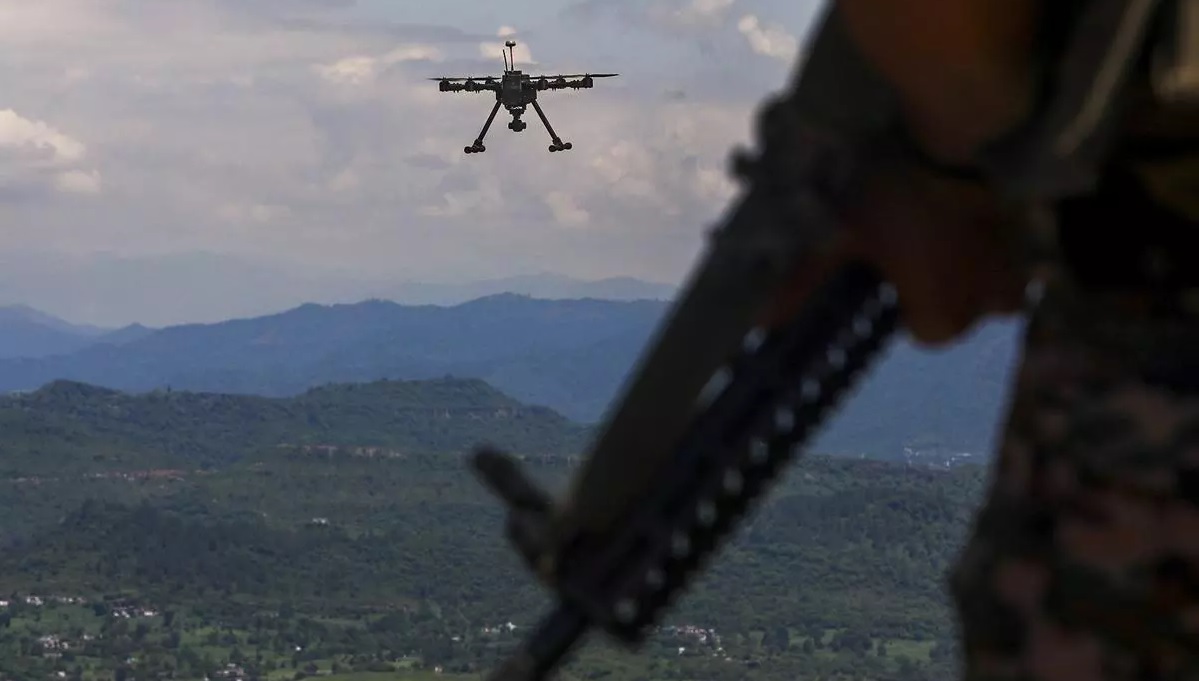 India's Defence Ministry Warns Against Chinese Parts in Military Drones Amid Security Concerns
India's Defence Ministry Warns Against Chinese Parts in Military Drones Amid Security Concerns
-
 China’s Super Radar Detects Mysterious Plasma Bubble Over Giza Pyramids
China’s Super Radar Detects Mysterious Plasma Bubble Over Giza Pyramids
-
 India's Indigenous Kaveri Engine Program with New Focus on Thrust and Performance
India's Indigenous Kaveri Engine Program with New Focus on Thrust and Performance
-
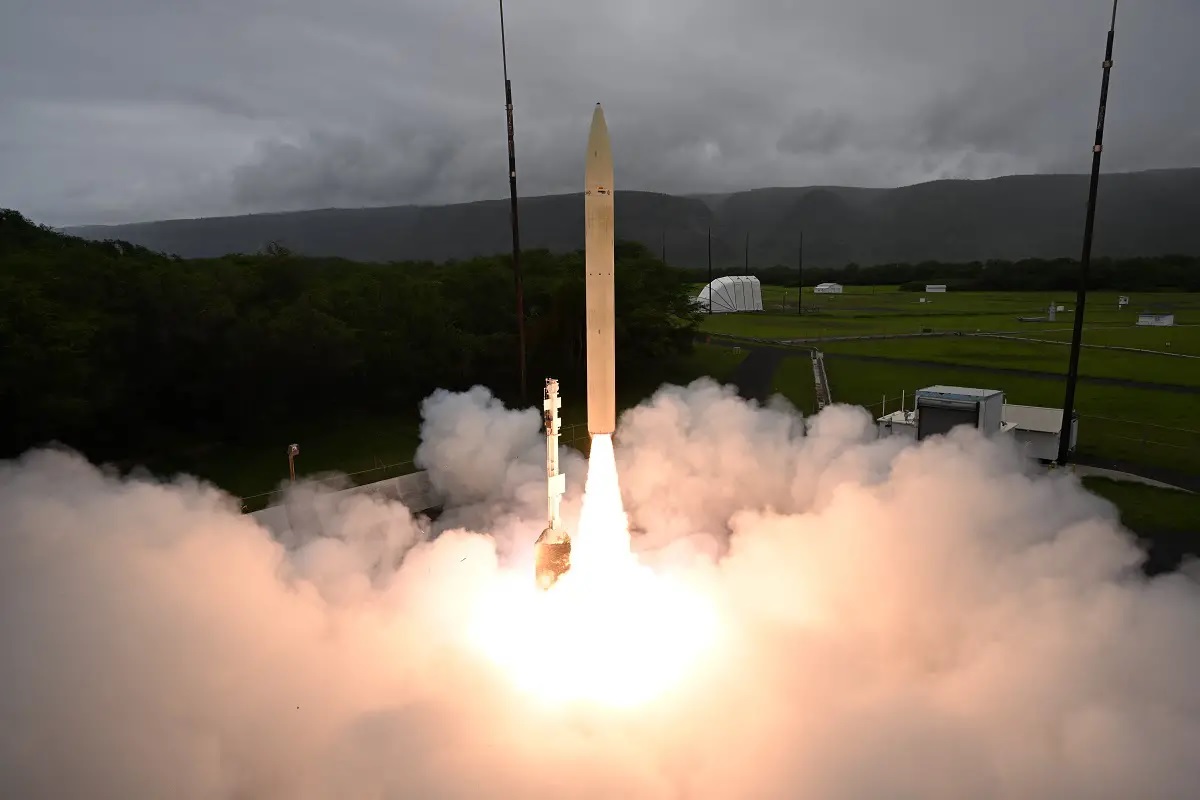 Successful Hypersonic Missile Test by U.S. Department of Defense
Successful Hypersonic Missile Test by U.S. Department of Defense
-
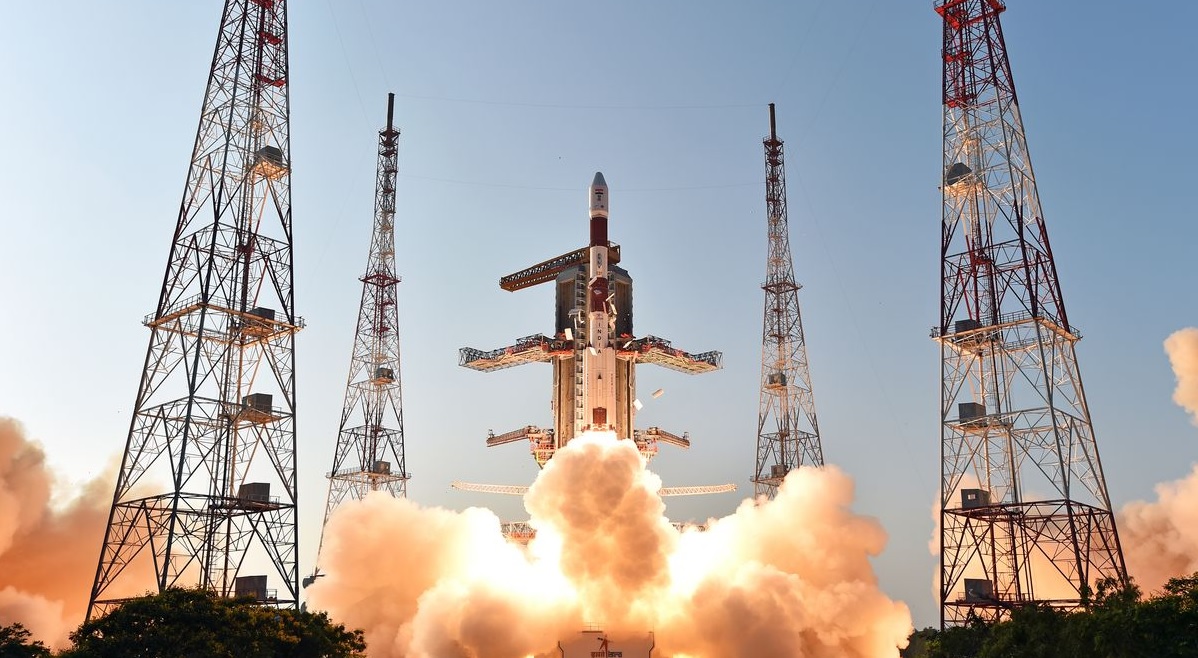 Isro Draws up Ambitious Plan for 2024, says will Launch at Least 12 Missions
Isro Draws up Ambitious Plan for 2024, says will Launch at Least 12 Missions
Top Trending in 4 Days
-
 Russian Scientists Develops Cancer Vaccine, will Distribute Free from 2025 in Russia
Russian Scientists Develops Cancer Vaccine, will Distribute Free from 2025 in Russia
-
 Zuchongzhi 3.0 vs. Google’s Willow: Chinese Quantum Computer Matches U.S. Rival in the Race for Superiority
Zuchongzhi 3.0 vs. Google’s Willow: Chinese Quantum Computer Matches U.S. Rival in the Race for Superiority
-
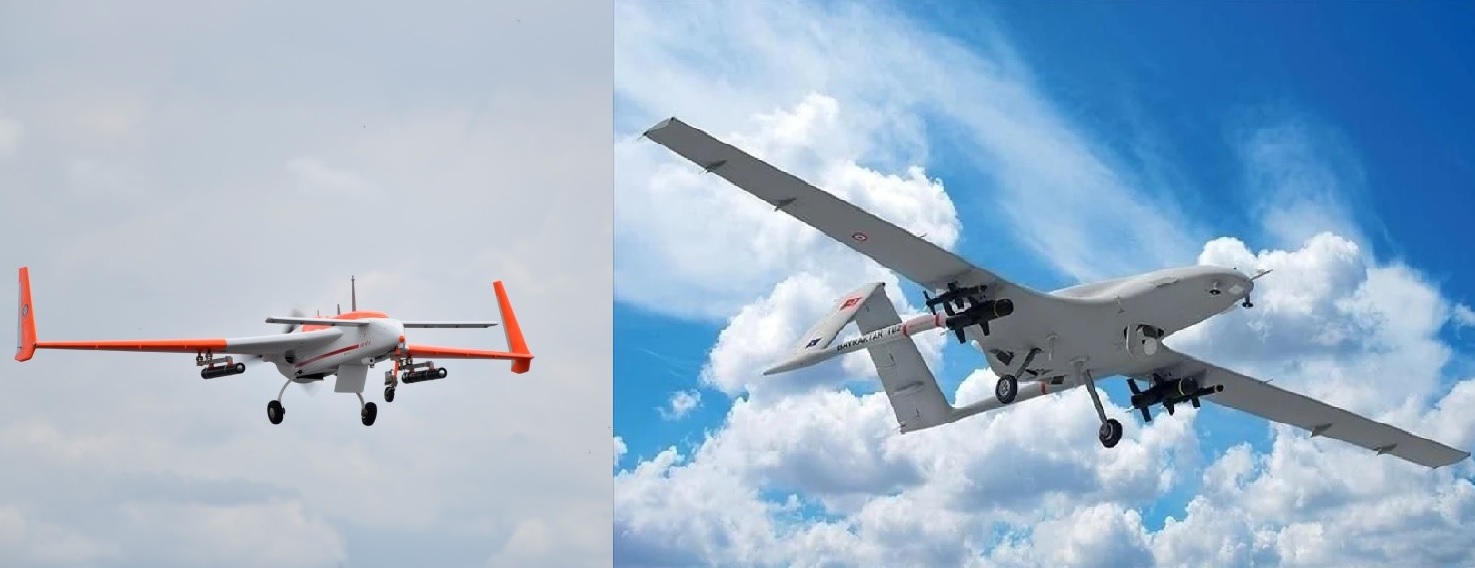 SRUAV-Weaponised vs Bayraktar TB2: A Detailed Comparison of India’s and Turkey’s Armed Drones
SRUAV-Weaponised vs Bayraktar TB2: A Detailed Comparison of India’s and Turkey’s Armed Drones
-
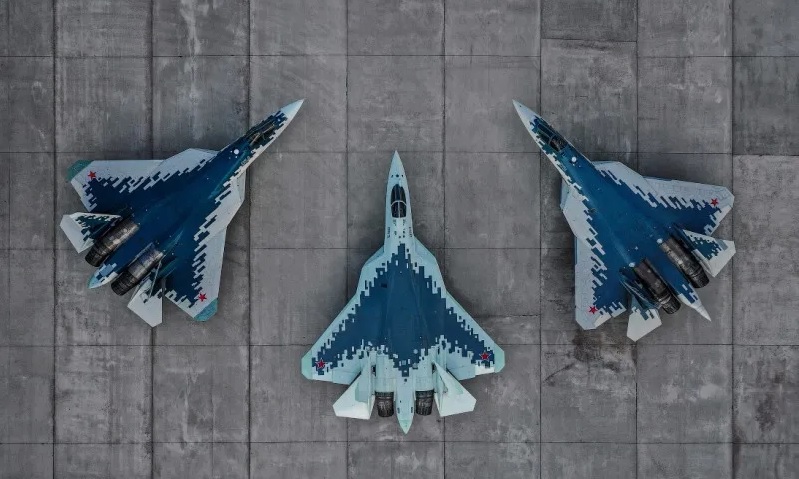 Russia to Propose 70 Su-57E Fighter Jet with AL-51F Engines G2G Deal to India During Putin's 2025 Visit
Russia to Propose 70 Su-57E Fighter Jet with AL-51F Engines G2G Deal to India During Putin's 2025 Visit
-
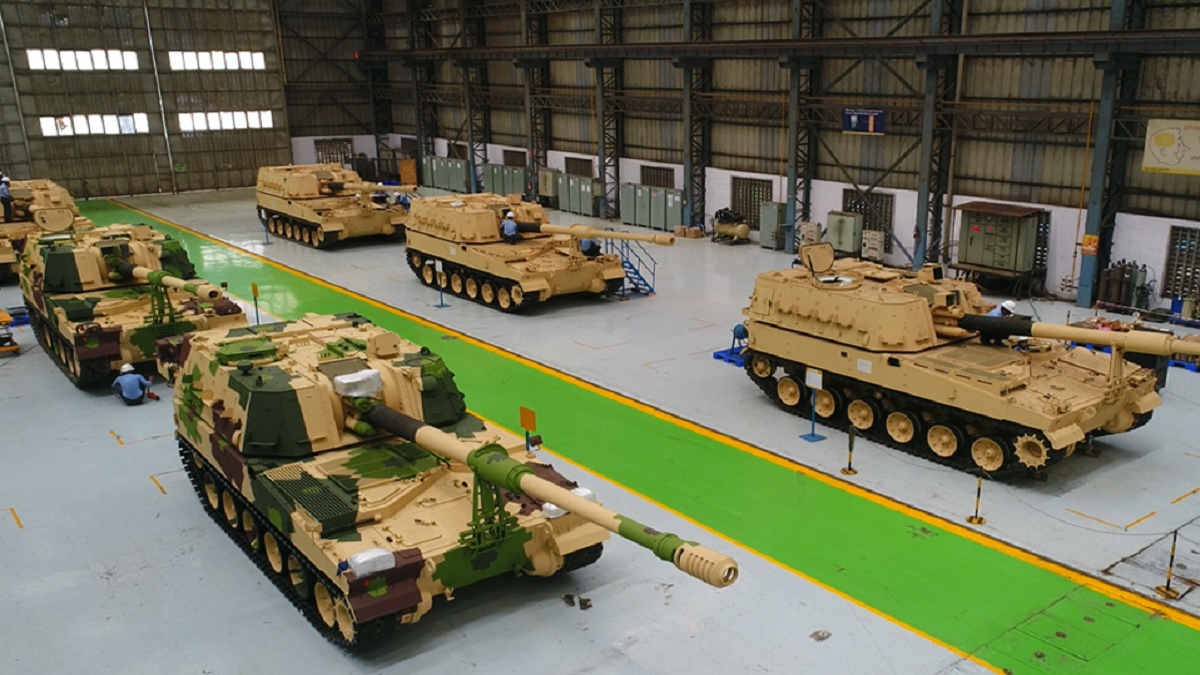 MoD Signs ₹7,628.70 Crore Deal with L&T for K9 Vajra-T Artillery Guns
MoD Signs ₹7,628.70 Crore Deal with L&T for K9 Vajra-T Artillery Guns
-
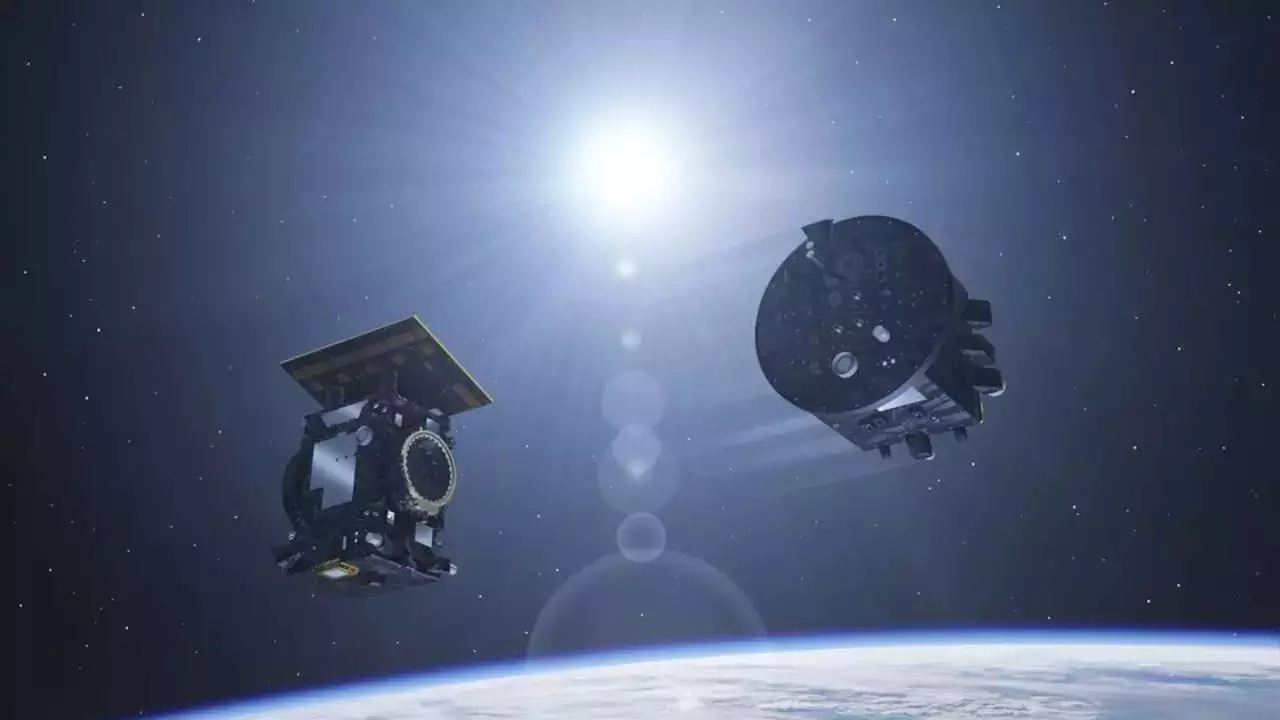 ISRO to Launch Historic SpaDEX Mission on December 30, 2024: India’s First Space Docking Experiment
ISRO to Launch Historic SpaDEX Mission on December 30, 2024: India’s First Space Docking Experiment
-
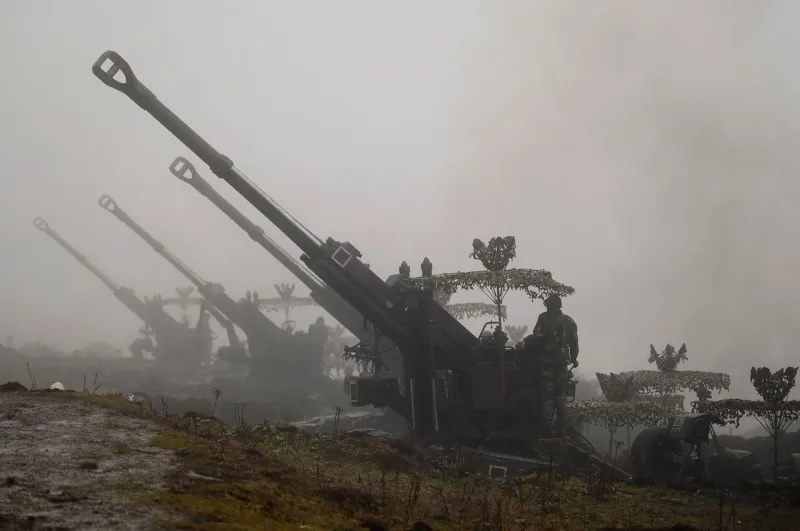 Pentagon Report: China Stations 120,000 Troops, Tanks, and Missiles Near Indian Border
Pentagon Report: China Stations 120,000 Troops, Tanks, and Missiles Near Indian Border
-
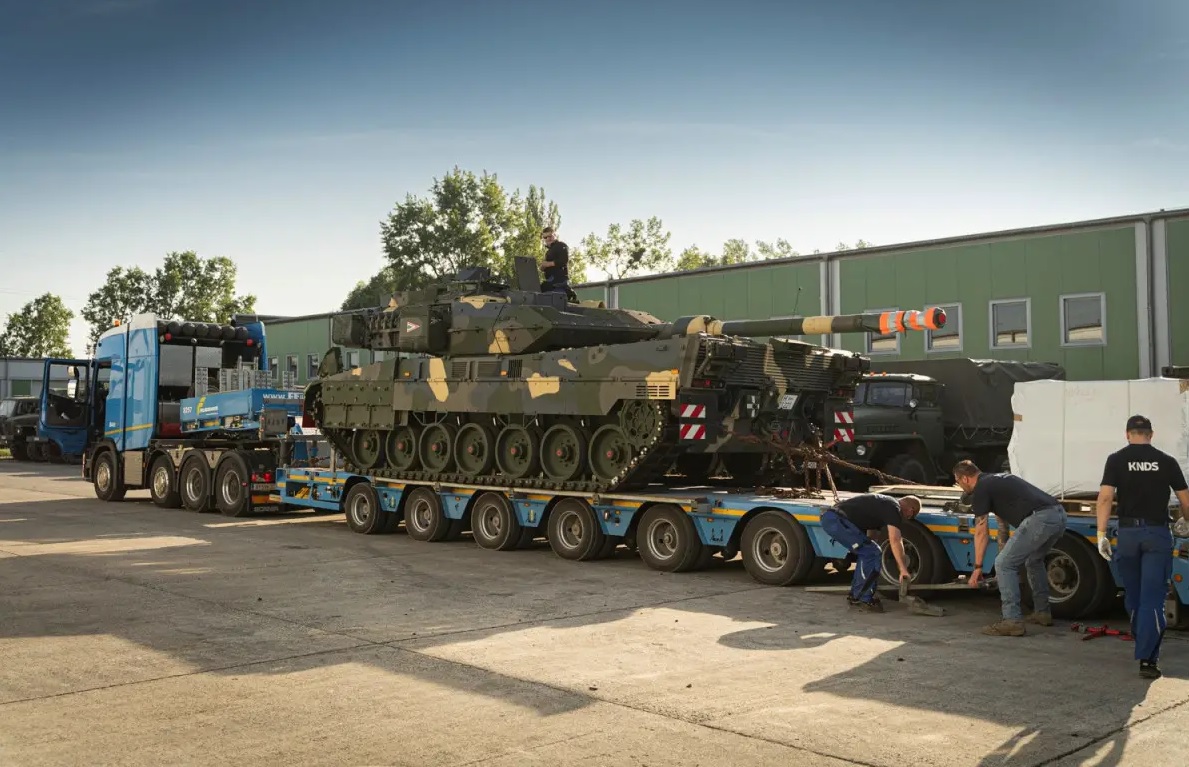 Hungary Receives 31 Leopard 2A7HU Tanks in Military Modernization Push
Hungary Receives 31 Leopard 2A7HU Tanks in Military Modernization Push

